The Division of Youth and Family Services (YFS) within Mecklenburg County’s Department of Social Services (DSS) partnered with First Place for Youth (First Place) to conduct a thorough ecosystem mapping and analysis. The analysis focused on understanding and addressing the needs and gaps of the system serving the county’s older foster youth (18-21) who are preparing to transition out of foster care. The comprehensive analysis process involved extensive stakeholder interviews, targeted focus groups, data analysis, desk research, and meaningful listening sessions with over a dozen youth with lived experience in foster care and encompassed an evaluation of services provided, available community resources, policies, and agency capacity.
To launch the endeavor, a group of young adults with lived experience in the system, YFS staff, and other key stakeholders co-created a future vision for how the system can support older foster youth in the years ahead: “All youth and young adults transitioning out of foster care in Mecklenburg County have the life skills required to thrive and attain self-sufficiency by age 21.”
Mecklenburg County Community Support Services’ Housing Innovation and Stabilization Services Division was also engaged to share insights on other supportive housing models throughout Charlotte-Mecklenburg. Although funding and resources existed for this vulnerable population, deeper investment and more strategic engagement were necessary in order to create better outcomes for aged out youth.
This blog provides an overview of key learnings and recommendations from the ecosystem analysis and how Mecklenburg County is moving from insights to action to improve outcomes for youth transitioning out of foster care.

